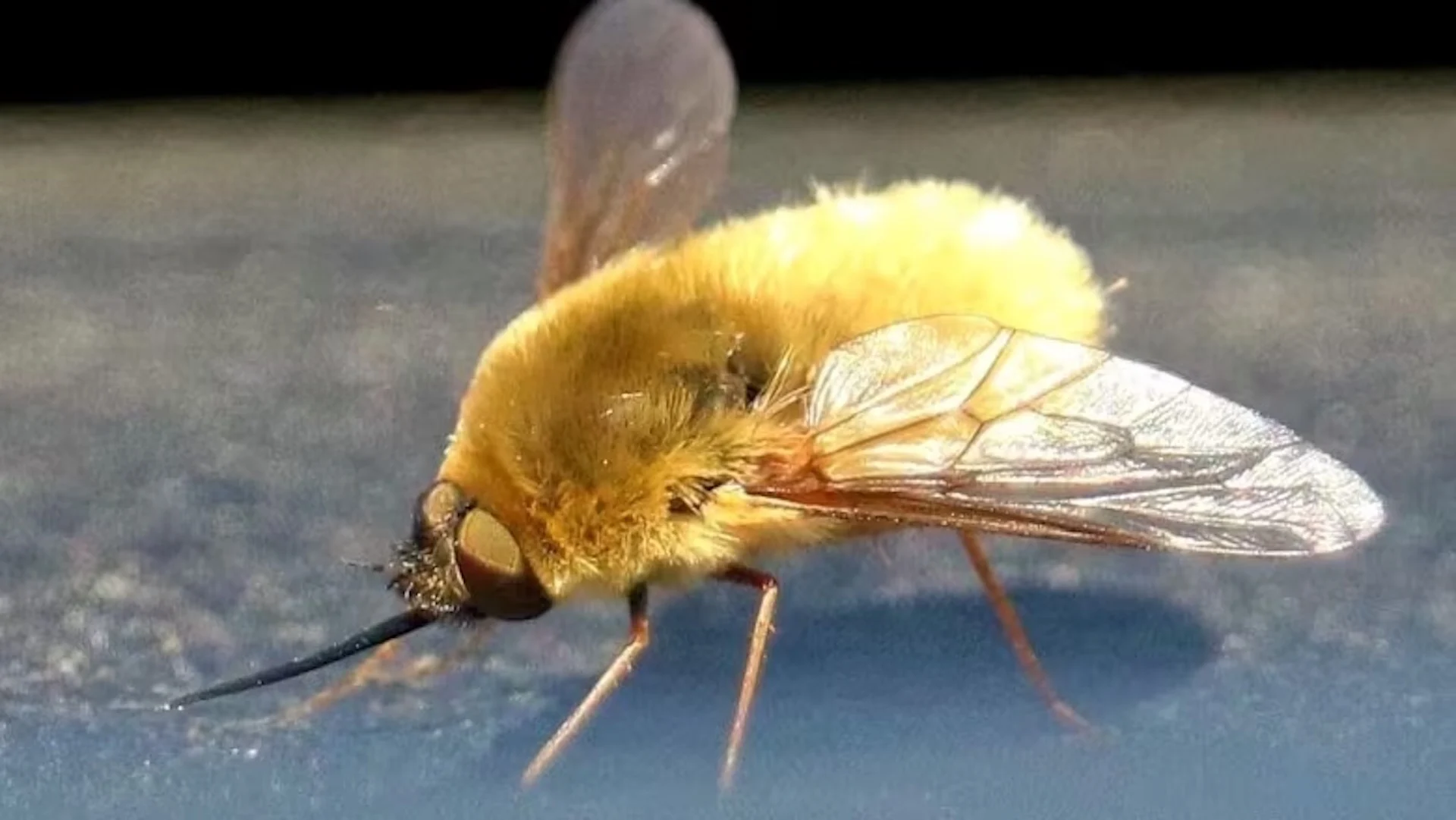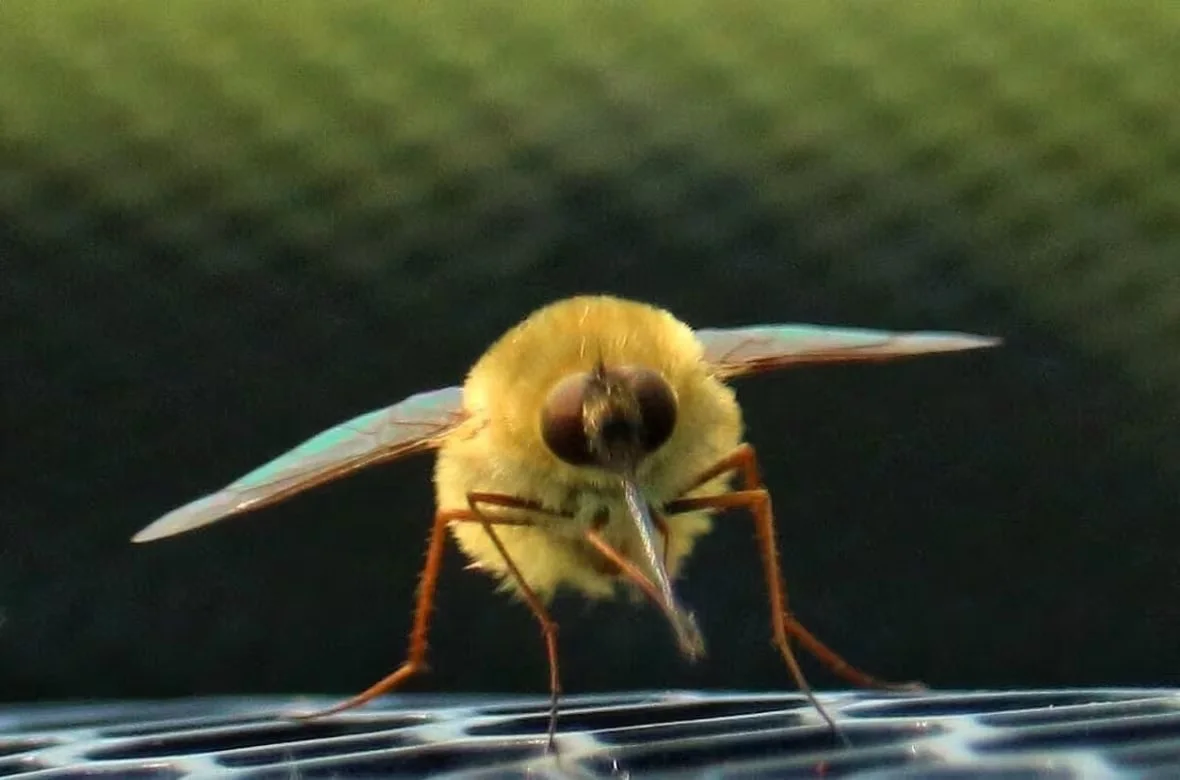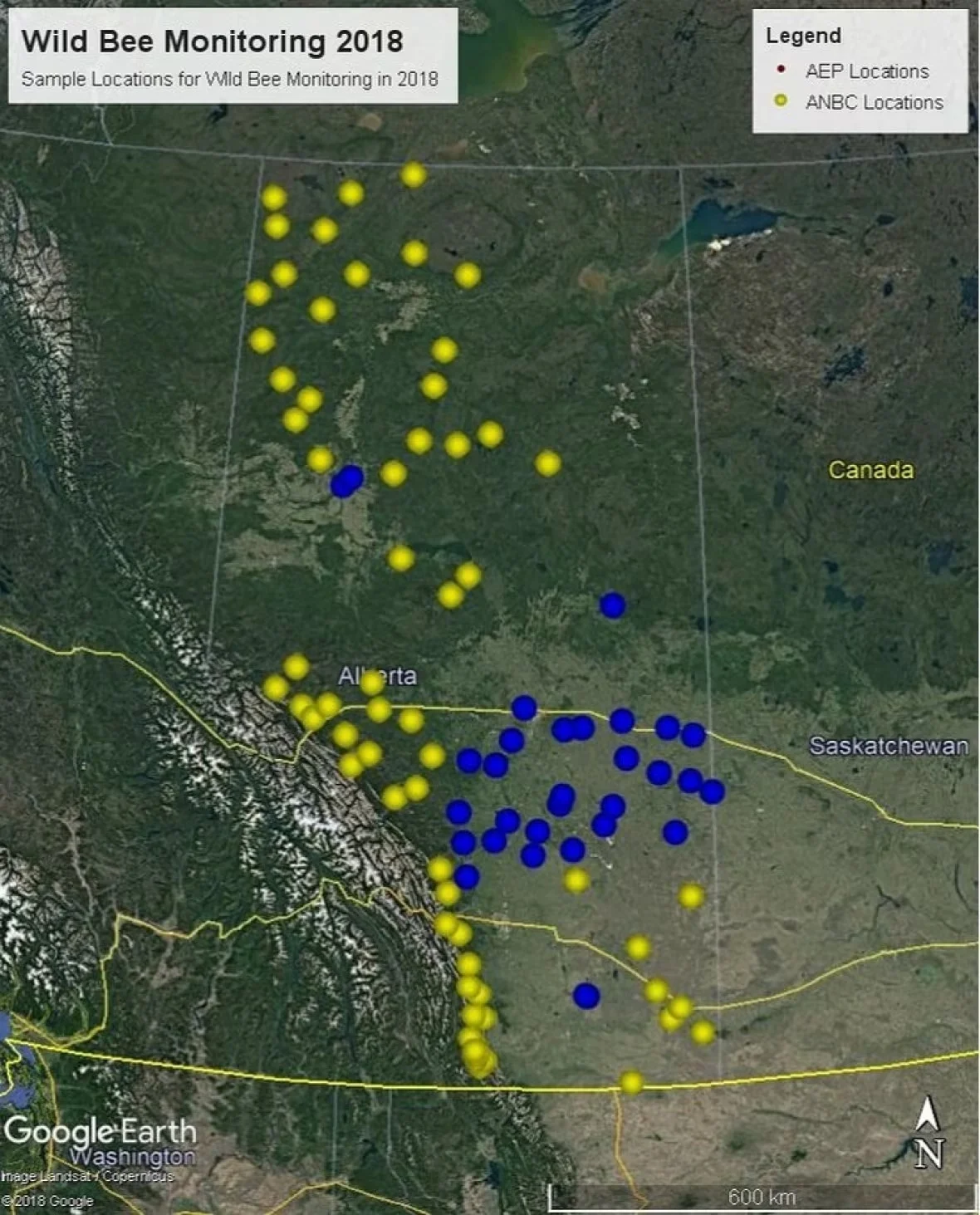
Missing bees in your garden this summer? Bee flies might be to blame
It wasn't the photo he intended, but wildlife photographer Rendy Shuya didn't mind.
"I didn't know what they were. I just thought it was a bee," said the Albertan who stumbled across a photogenic insect when it landed on the dash of his vehicle while he was out taking photos last June.
But it wasn't, so he decided to upload the photo to Google and it turned out to be a bee fly — scientifically known as Bombyliidae.
SEE ALSO: B.C. farm finds unique way to help Canada's struggling bee population
It was the first time he ever saw one, and then he saw more a month later. And he wasn't alone. Other members of the Alberta Wildlife Facebook group, a private group for Albertans who like to share wildlife photos that he participates in, saw them too. But many in the comment sections didn't recognize the tiny pollinator.
Is it a hummingbird moth? They asked. Are they also called leaf cutter bees? Are these new to the area?
Turns out it was a big "no" to all of those questions.
"There have been more reports of bee flies than we have seen other years," Ron Miksha of the Alberta Native Bee Council told CBC Calgary in an email.
"Bee flies are real flies. They mimic bumble bees and even do a bit of pollinating, though it is inefficient as these flies quickly hover above flowers and, mostly using static electricity, draw pollen up to them. Then they quickly disappear, often unseen by gardeners."
He says bee flies — which are known to frequent areas across Canada — search for bumble bee nests in the spring and lay eggs by "dropping them like little bombs" onto pollen that is then collected by bumble bees. The bee fly larvae then feast on the bumble bees' stores, and even eat developing bumble bees.

Bee fly larva attaches to a host with its straw-like tongue, called a proboscis, and slowly consumes it. (Rendy Shuya)
"It's all quite messy, nasty and parasitic. But it's cyclical," said Miksha. "After a few years of high bee fly density, bumble bees are fewer, causing a drop in bee fly population, allowing bumble bees to become more prolific again."
But it's not only bumble bees getting slowly eaten alive. Bee flies eat the eggs of other insects, like wasps and grasshoppers. So if you happen to be missing any of these insects in your garden this year, it just might have been some insecticide in the first degree.
Miksha says urban gardens are almost exclusively pollinated by Alberta's 370 species of wild native bees, which face many threats.
"Insects across the globe are declining," said Megan Evans, president of the Alberta Native Bee Council.
It's become known as the windshield phenomena, as there is less need to clean off your car as insects decline. Evan says one German study saw a 75 per cent decline in 25 years.
WATCH: This unique Canadian farm rents out bees to farmers
Evans says bees in particular are under a lot of stress. There's the habitat loss as grasslands are turned into crops, and pesticide exposure. The shifting temperatures of climate change sometimes creates a mismatch of when bees and flowers emerge, and the extreme weather that it brings can also wreak havoc on their life cycles.
Then there are the pests, pathogens and diseases that have emerged. There are also more non-native honey bees being brought into Alberta for crop pollination and urban beekeeping, which means more competition for their food source.
The Alberta Native Bee Council participated in a small, unpublished study that found a 50 per cent decline in bee species from the 1990s to 2010s in Waterton Lakes National Park.
It's part of the reason the organization launched the Provincial Native Bee Monitoring Program in 2018, as 60 per cent of bees are not assigned conservation status. The program aims to better understand what is happening to native bee populations, but the data is still being processed.

The 2018 monitoring program focused mostly on forested land, since grasslands are well studied. They partnered with wildfire lookout stations to set out traps, and it was the largest sampling of bees to date in Alberta. (www.albertanativebeecouncil.ca)
The goal is to determine a baseline so there is more data about how populations are being impacted before releasing it publicly when finalized, but the program has already identified 40 bee species in Alberta not included on the current federal list.
"There is a tremendous need there.... But it shouldn't take six years to do that," said Evans. "We learned the hard way we need more staff."
Right now they are hoping to secure more funding for the next round of volunteer-led information gathering planned for 2024, but say it feels like they are more organized already.
But if anyone else wants to help native bees in the meantime, Evans says the best thing to do is plant native flowers and be aware of the diversity of species Alberta has to offer.
WATCH: Invasive bees discovered in Canada may be a serious threat to native populations
Thumbnail courtesy of Rendy Shuya via CBC.
The story was originally written by Rachel Maclean and published for CBC News.